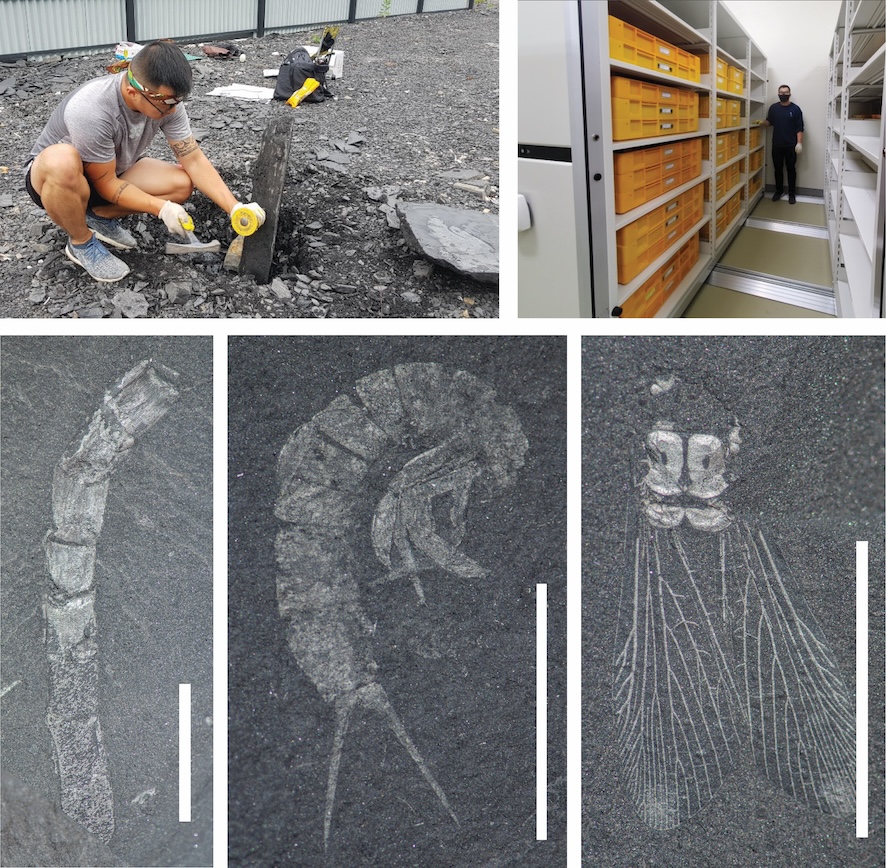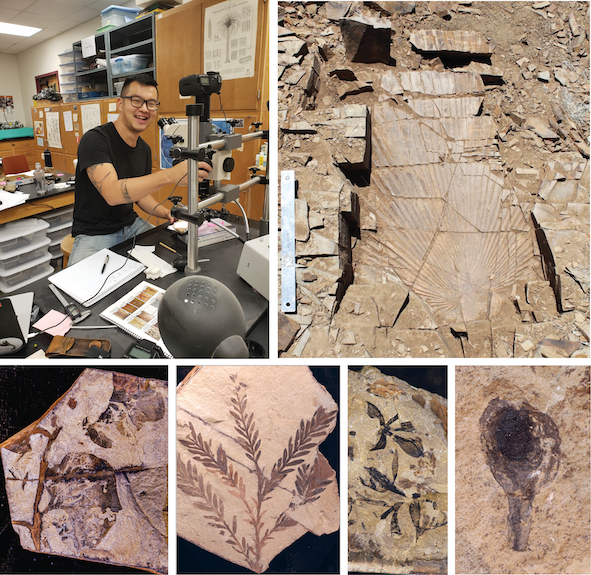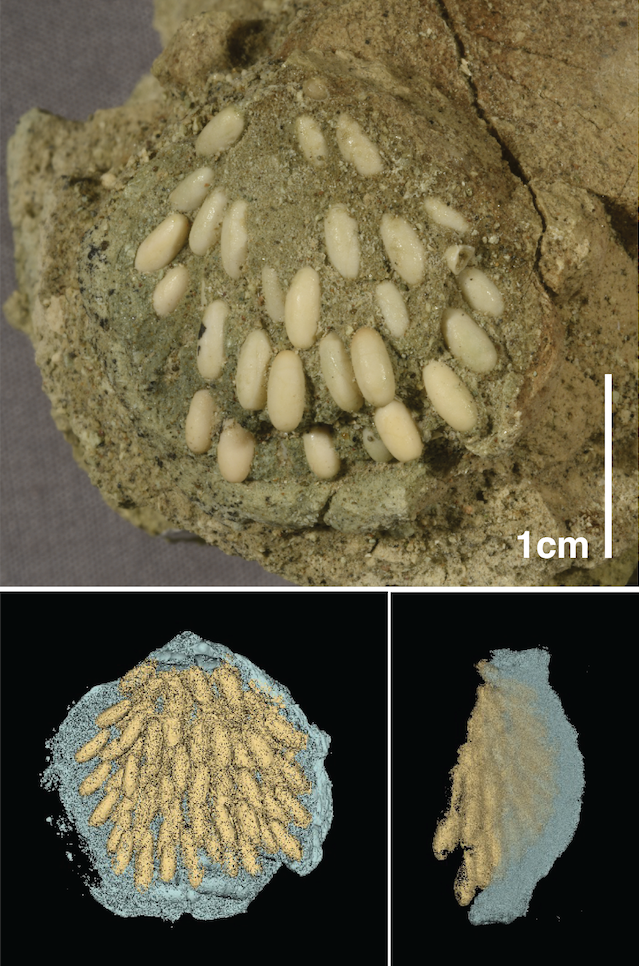research
I am currently a PhD Candidate in the Department of Integrative Biology at University of California, Berkeley, advised by Cindy Looy (Looy Lab). I am also affiliated with the UC Museum of Paleontology.
I am fascinated by the vast taxonomic, morphological, and ecological diversity of plants and insects, their interactions, as well as their importance in terrestrial ecosystem functioning throughout Earth’s history. My primary research investigates several aspects of the transition from gymnosperm to angiosperm-dominated world during the Jurassic to Early Paleogene. I study plant and insect body fossils, trace fossils, as well as extant specimens to more completely understand their evolutionary ecology in Deep Time. My research integrates fieldwork, museum collections, morphology, taxonomy and systematics, geology, and natural history.

Diachronous spread of angiosperms in the Early Cretaceous
The first angiosperms are known from Early Cretaceous tropical regions (ca. 140 million years ago), and they became globally distributed by 100 Mya. This floral change contributed to high rates of extinction, origination, and host-shifting in phytophagous insects, resulting in a family-level taxonomic diversity plateau known as the Aptian-Albian Diversity Gap (125-90 Mya).
The Albian Jinju flora (110-106 Mya) from South Korea demonstrates that the early angiosperm radiation was rather diachronous. The assemblage completely lacks angiosperms, and I am investigating potential environmental conditions behind the lagged appearance of angiosperms in the Gyeongsang Basin where the assemblage was deposited.
Associated with this gymnosperm-dominated flora, I collected an exceptionally preserved rich insect assemblage. Understanding the ecology and composition of Jinju insect assemblage, compared with angiosperm-bearing nearby contemporary entomofaunas, has a great potential for studying the impact of the early angiosperm radiation on insect communities.
Collaborators: Kyung Soo Kim (Chinju National University of Education, South Korea)
The oldest angiosperm-dominated megathermal forest
During the Late Cretaceous, terrestrial ecosystems experienced a major biodiversity and productivity increase linked to the ecological expansion of angiosperms, known as the Angiosperm Terrestrial Revolution. However, close-canopied, multistratal forests dominated by angiosperms, like modern tropical rainforests, are thought to not have emerged until after the end-Cretaceous extinction. Instead, Cretaceous angiosperms are commonly viewed as weedy, small-statured, and inhabiting open/disturbed habitats.
The hyperdiverse Jose Creek flora, an in situ, inland forest preserving leaves, flowers, diaspores (dispersal units), and wood buried in an ashfall deposit, provides an extremely rare snapshot of a dense megathermal forest during angiosperm expansion. Angiosperms are taxonomically and ecologically dominant, and display an array of growth forms. Some have reached the canopy, forming a conifer-angiosperm mixed canopy that are non-analogous in modern ecosystems. I am studying several paleoecological aspects of this exceptional forest, including its dispersal and reproductive ecology, and patterns of insect herbivory.
Collaborators: Dori Contreras (Perot Museum of Nature and Science), Gary Upchurch (University of Colorado Museum of Natural History)


Warm and mesic Late Jurassic ecosystems from Western North America
Before the rise of angiosperms, terrestrial ecosystems were filled with ferns and gymnosperms, such as conifers, cycads, ginkgos, and other extinct groups. During the Jurassic, many of these plant groups experienced ecological radiations. Our understanding of the Jurassic North American floras, however, is extremely limited, with the Late Jurassic Morrison flora from the Western Interior being the only known example.
I have been studying two Late Jurassic macrofloras, and their associated insect herbivory, from the Pacific coastal region that were only briefly described in the early 1900s. These coastal floras from California and Oregon, show marked differences in their composition compared to the contemporary Morrison Flora from the Western Interior. These floras are dominated by broadleaf cycads and ginkgos. I am looking into the floristic compositions of these floras and the associated insect herbivory that shows an array of diverse damage types.
Understanding ontogeny in Deep Time:
29-million-year-old grasshopper ootheca
Reproductive ecology and ontogeny play a critical role in insect dispersal which shapes their biogeographic patterns. Ontogenetic strategies, such as holometaboly, are some of the most important traits contributing to the evolutionary success of insects. However, understanding the non-adult life history traits in Deep Time is challenging due to their ephemeral and soft-bodied nature.
I described a grasshopper egg pod using microtomography from the Oligocene John Day Formation, Oregon, together with Nick Famoso (NPS Paleontologist at John Day Fossil Beds National Monument) and Angela Lin (X-ray imaging core Director at University of Oregon). The specimen, preserving ~50 slightly-curved elliptic eggs and also the ovipositional strategy of laying an underground ootheca, represents the oldest fossilized grasshopper ootheca and also the first known orthopteran eggs in the fossil record.Due to the rarity of fossil insect eggs, systematic praxis have yet been established to systematically study them. However, the number of described fossil insect eggs has rapidly increased in the past decade, and is likely to continue increasing. So we proposed to apply an ootaxonomic system when studying fossilized insect eggs, to establish a standardized systematic practice, which is already practiced in fossil amniote eggs; and an ichnotaxonomic system that describes the ootheca-laying behavior, which has convergently evolved several times among insects.
Check out the research article or this CNN article to learn more!
